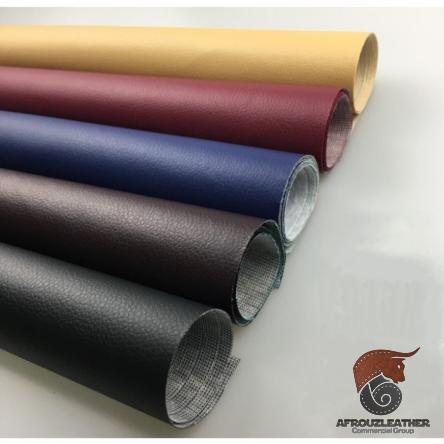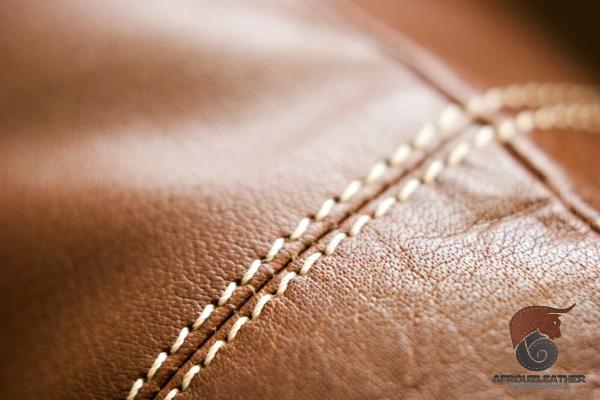Genuine leather is a natural material renowned for its durability, versatility, and timeless appeal. It is widely used in the production of various everyday products, including furniture, shoes, bags, and accessories. In this comprehensive guide, we will explore the characteristics of genuine leather, its types, grades, and applications. Additionally, we will delve into factors to consider when purchasing genuine leather material to ensure you make an informed choice. 1. What is Genuine Leather? Genuine leather is a term used to describe real leather that has been made from animal hides and prepared using traditional tanning methods. It is distinct from synthetic leather or faux leather, which are man-made materials designed to mimic the look and feel of genuine leather. Genuine leather is valued for its natural beauty, unique textures, and the fact that it develops a patina over time, adding to its charm. 2. Types of Genuine Leather: a. Full-Grain Leather: Full-grain leather is the highest quality and most durable form of genuine leather. It is made from the complete thickness of the animal hide, including the top grain (outermost layer) and the lower layers. Full-grain leather retains the natural imperfections and unique markings on the surface, resulting in a distinctive appearance.
leather
 b. Top-Grain Leather: Top-grain leather is derived from the uppermost layer of the animal hide, where the grain surface is sanded or buffed to remove any imperfections. This leather type maintains its strength and durability while having a more uniform appearance compared to full-grain leather. c. Corrected-Grain Leather: Corrected-grain leather is produced by sanding or buffing the surface of the leather to remove imperfections and blemishes. An artificial grain pattern is then embossed onto the leather, resulting in a more homogeneous appearance. Corrected-grain leather is often used in applications where a more consistent surface is desired, such as furniture upholstery. d. Split Leather: Split leather is derived from the lower layers of the animal hide, after the top-grain is separated. It is less durable and has a rougher texture compared to full-grain or top-grain leather. Split leather is commonly used in the production of suede, which has a soft, velvety surface. 3. Leather Grades: Different grades of genuine leather exist, which reflect the quality and characteristics of the material. These grades are determined by factors such as the quality of the animal hide used, the tanning process employed, and the presence of imperfections.
b. Top-Grain Leather: Top-grain leather is derived from the uppermost layer of the animal hide, where the grain surface is sanded or buffed to remove any imperfections. This leather type maintains its strength and durability while having a more uniform appearance compared to full-grain leather. c. Corrected-Grain Leather: Corrected-grain leather is produced by sanding or buffing the surface of the leather to remove imperfections and blemishes. An artificial grain pattern is then embossed onto the leather, resulting in a more homogeneous appearance. Corrected-grain leather is often used in applications where a more consistent surface is desired, such as furniture upholstery. d. Split Leather: Split leather is derived from the lower layers of the animal hide, after the top-grain is separated. It is less durable and has a rougher texture compared to full-grain or top-grain leather. Split leather is commonly used in the production of suede, which has a soft, velvety surface. 3. Leather Grades: Different grades of genuine leather exist, which reflect the quality and characteristics of the material. These grades are determined by factors such as the quality of the animal hide used, the tanning process employed, and the presence of imperfections.
Specifications of leather
 a. Grade 1 Leather: Also known as premium or first-grade leather, Grade 1 leather exhibits minimal imperfections, and its surface is smooth and consistent. This top-tier grade is often used in luxury products. b. Grade 2 Leather: Grade 2 leather may exhibit slight imperfections and variations in the surface, but it still possesses good overall quality. It is commonly used in mid-range products. c. Grade 3 Leather: Grade 3 leather may have visible scars, marks, or other imperfections on the surface. While it may not meet the highest standards of appearance, it remains durable and suitable for budget-friendly items. 4. Factors to Consider When Buying Genuine Leather Material: a. Purpose: Determine the intended use of the leather material you plan to purchase. Different types of leather offer varying levels of durability and resistance to wear and tear. Consider whether the leather will be used for upholstery, footwear, accessories, or other applications. b. Quality and Authenticity: Ensure that the leather material you purchase is genuine and of high quality. Look for certifications, such as the Leather Working Group certification, to ensure that the leather is sourced and processed responsibly.
a. Grade 1 Leather: Also known as premium or first-grade leather, Grade 1 leather exhibits minimal imperfections, and its surface is smooth and consistent. This top-tier grade is often used in luxury products. b. Grade 2 Leather: Grade 2 leather may exhibit slight imperfections and variations in the surface, but it still possesses good overall quality. It is commonly used in mid-range products. c. Grade 3 Leather: Grade 3 leather may have visible scars, marks, or other imperfections on the surface. While it may not meet the highest standards of appearance, it remains durable and suitable for budget-friendly items. 4. Factors to Consider When Buying Genuine Leather Material: a. Purpose: Determine the intended use of the leather material you plan to purchase. Different types of leather offer varying levels of durability and resistance to wear and tear. Consider whether the leather will be used for upholstery, footwear, accessories, or other applications. b. Quality and Authenticity: Ensure that the leather material you purchase is genuine and of high quality. Look for certifications, such as the Leather Working Group certification, to ensure that the leather is sourced and processed responsibly.
buy leather
 c. Leather Thickness: The thickness of the leather will affect its durability and strength. Thicker leather is generally more robust and long-lasting, making it suitable for heavy-duty items like furniture or belts. d. Finish and Texture: Pay attention to the finish and texture of the leather, as it can greatly impact the overall aesthetic of the final product. Some leathers have a smooth and polished finish, while others have a more natural and rustic appearance. e. Sustainability: Consider the sustainability aspect of the leather material. Opt for leather that is produced with environmentally friendly practices and processes, reducing its impact on the environment. f. Price: Genuine leather material can vary greatly in price. Consider your budget and balance it with the desired quality and durability of the leather. 5. Care and Maintenance: Taking proper care of genuine leather will help ensure its longevity and preserve its appearance. Simple steps like avoiding exposure to direct sunlight, using appropriate leather cleaners and conditioners, and storing the leather item in a cool and dry place can all contribute to maintaining its quality. Conclusion: Genuine leather is a versatile and durable material that is highly sought after for its natural beauty and appeal. Understanding the different types, grades, and factors to consider when purchasing genuine leather material is essential for making an informed buying decision. By following the suggestions outlined in this guide, you can confidently select the perfect genuine leather material for your intended use, ensuring that it will meet your expectations in terms of quality, durability, and style.
c. Leather Thickness: The thickness of the leather will affect its durability and strength. Thicker leather is generally more robust and long-lasting, making it suitable for heavy-duty items like furniture or belts. d. Finish and Texture: Pay attention to the finish and texture of the leather, as it can greatly impact the overall aesthetic of the final product. Some leathers have a smooth and polished finish, while others have a more natural and rustic appearance. e. Sustainability: Consider the sustainability aspect of the leather material. Opt for leather that is produced with environmentally friendly practices and processes, reducing its impact on the environment. f. Price: Genuine leather material can vary greatly in price. Consider your budget and balance it with the desired quality and durability of the leather. 5. Care and Maintenance: Taking proper care of genuine leather will help ensure its longevity and preserve its appearance. Simple steps like avoiding exposure to direct sunlight, using appropriate leather cleaners and conditioners, and storing the leather item in a cool and dry place can all contribute to maintaining its quality. Conclusion: Genuine leather is a versatile and durable material that is highly sought after for its natural beauty and appeal. Understanding the different types, grades, and factors to consider when purchasing genuine leather material is essential for making an informed buying decision. By following the suggestions outlined in this guide, you can confidently select the perfect genuine leather material for your intended use, ensuring that it will meet your expectations in terms of quality, durability, and style.

Your comment submitted.